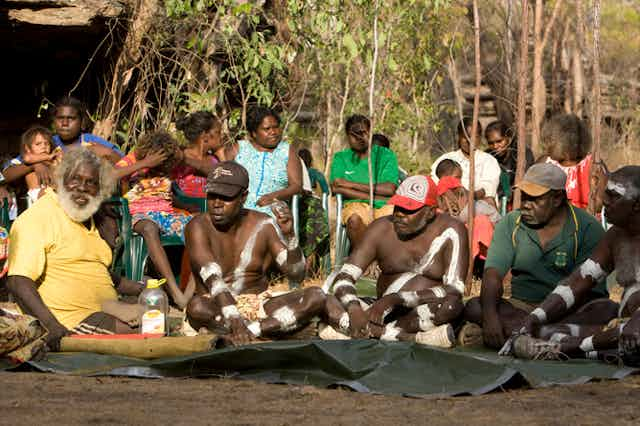From 2016, high school students will be able to study any one of the 70 or more Aboriginal languages of New South Wales.
Teachers, academics and the wider community have fought hard for this policy shift in this state.
But it’s disappointing that the course will only count towards the Higher School Certificate (HSC) and not contribute toward a student’s Australian Tertiary Admission Rank (ATAR).
By not making the subject ATAR-accredited to help students gain entry to university, it acts as a disincentive to study Aboriginal languages.
This decision effectively places a further barrier between students wishing to genuinely understand Aboriginal languages, and their desire to pursue further study through the higher education system.
Will students actually study Aboriginal languages?
The new subject offers students the opportunity to engage in a meaningful way with Australia’s first languages and to learn to communicate, speak, read and write an Aboriginal language.
Schools will work with communities to help design a course for the language they’ve chosen that will fit the local community vision.
In most cases communities will choose a language of their area, but in some big centres like Sydney, a language from off country, out of the area, might be chosen.
The focus on teaching anything about Australian languages in our universities has declined over the past decade. This is partly due to the dwindling funding available for any research or documentation of our languages.
The sad statistics of the decline in the everyday use of Aboriginal languages speak for themselves.
The 250 languages of Australia are now reduced to only 13 that are still being actively spoken on a daily basis as the main language of communication by all age groups in their communities.
This figure represents a loss of five languages over the past decade. At this rate our Australian languages will all cease to be active first languages within the next 25 years.
How will the syllabus work?
The Aboriginal languages course syllabus, developed by the Board of Studies Teaching and Educational Standards NSW, relies on schools to create the teaching program.
It gives schools the opportunity to actively engage with their local Aboriginal community in developing a language program.
The thinking behind this was to support community engagement while ensuring the broadest possible uptake for the syllabus.
Reading between the lines of the syllabus, it’s impossible to ignore a certain mindset from the board - a view that developing board-endorsed courses that would count towards a student’s ATAR would be too hard and too expensive, and possibly a bit scary.
It would mean going the next step and creating a syllabus that sets standards for content and assessment that schools would then use to develop a language-specific curriculum. Or an even larger piece of work for the board – to develop separate syllabuses for all the languages of NSW.
It would certainly be possible to do this for many, right now. About a dozen NSW languages have been taught in schools for years at primary level. These would make great candidates for their own HSC subjects.
What the new syllabus is doing is putting the work back onto the schools, with little in the way of additional resourcing.
Who will teach Aboriginal languages?
Another major issue will be who can actually teach these languages.
It is time that universities took seriously the need to train teachers in Aboriginal languages education.
The Australian Curriculum Assessment and Reporting Authority (ACARA) is about to release a nation-wide framework for Aboriginal and Torres Strait Islander languages within the Australian curriculum.
This is another opportunity for all schools in Australia to teach an Aboriginal or Torres Strait Islander language.
However, without immediate government support to train teachers, support language revival programs and assist communities to engage in language development programs, it will be difficult for any school to gain real traction in teaching Australia’s first languages.

